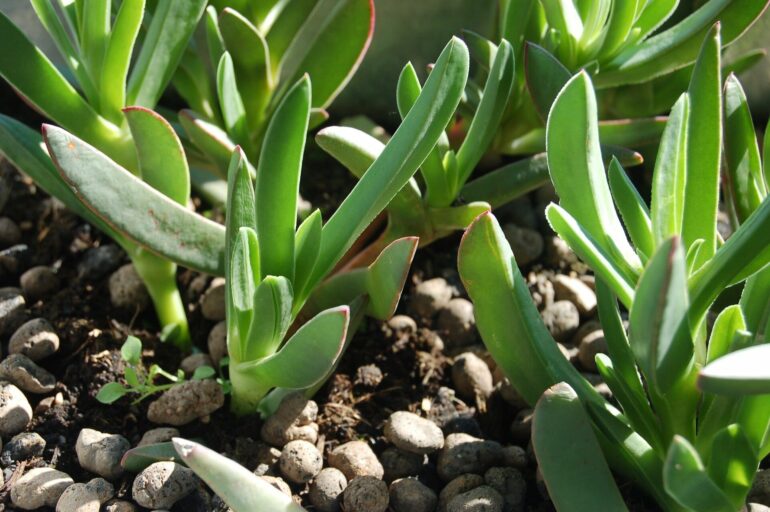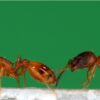Some invasive plants can form persistent banks of seeds that remain under the soil for years, and this makes their eradication practically impossible. Over time, this invisible population of large quantities of living, buried plants—in seed form—will reoccupy ecosystems and displace the typical flora of the natural environment.
This is the case of the invasive plants that are common in the Mediterranean habitats, according to an article published in the journal Trends in Plant Science by Professor Sergi Munné-Bosch, from the Faculty of Biology, the Biodiversity Research Institute (IRBio) and the Institute for Research in Nutrition and Food Safety (INSA) of the University of Barcelona.
How do invasive plants spread?
The great resistance and dispersal capacity of the invasive plants has completely transformed the flora on the Mediterranean coasts. The native flora, on the other hand, does not have such efficient spreading mechanisms as the invasive plants.
The new study, focused on Carpobrotus, Acacia, Agave, and Opuntia, reveals the sophisticated strategies of invasive plants to occupy new habitats successfully and move the native flora.
“The most paradigmatic case is that of the genus Carpobrotus, which includes several plant species; some are already capable of forming hybrids so specially adapted to Mediterranean habitats that they can colonize areas as specific as the coastline of the coasts of Catalonia,” says Sergi Munné-Bosch.
“They are very resistant to changing conditions associated with climate change and show a perfect combination of clonal and sexual reproduction to be able to colonize new spaces quickly. In addition, one of the most important characteristics of this genus is its ability to create persistent seed banks that remain buried for years.”
Today, one only needs to walk along the coastal paths of the Costa Brava and other parts of the coast to see the effects of these plants. “The case of the Opuntia genus is also very evident along the coastline of the Alt Empordà and southern France, among many other places with fragmented habitats, which are the areas most susceptible to colonization by invasive plants,” says the author, member of the Department of Evolutionary Biology, Ecology and Environmental Sciences.
Human activity and biological invasions
The author notes, “These biological invasions have been caused by ourselves, humans, by creating a high propagule pressure (number of seeds or plant components arriving in a given area) in these fragmented habitats.”
“All these areas show a significant characteristic: the footprint left by humans. Human activities (gardening, urban planning, tourism, etc.) end up fragmenting natural habitats and facilitate the introduction of new species that then adapt extraordinarily to the spaces that we have modified forever,” says Munné-Bosch.
“After all, it is our lack of knowledge that has led us to have Mediterranean habitats particularly threatened by the presence of invasive plants that will never return to the way they were before.”
Prevention to protect the environment
Historical records show that many invasive species have benefited greatly from human-driven reintroductions. Thus, conserving natural areas away from the threat of invasive species and preventing future colonization is the only effective strategy to preserve the natural environment.
“We have to prevent the invasion of colonizing plants where they have not yet been introduced by human action. Even if there are many awareness campaigns, likely, we will never manage to eradicate them, at least in some areas,” says the researcher.
“We must be aware that the unintentional introduction of a single plant (in landscaping or as a result of the construction of a road or a new development) in a place that is unsuitable from a nature conservation point of view can lead to major changes in our natural ecosystems. Our activity can greatly influence natural ecosystems and lead to their degradation. Preserving nature is the best investment to preserve the existence of our species, and that is why the protection of natural areas must be a priority,” concludes the expert.
More information:
Sergi Munné-Bosch, Achieving the impossible: prevention and eradication of invasive plants in Mediterranean-type ecosystems, Trends in Plant Science (2023). DOI: 10.1016/j.tplants.2023.11.007
Provided by
University of Barcelona
Citation:
How human activity facilitates invasive plants’ colonization in Mediterranean ecosystems (2024, January 12)



